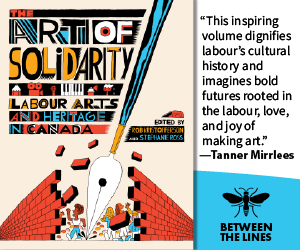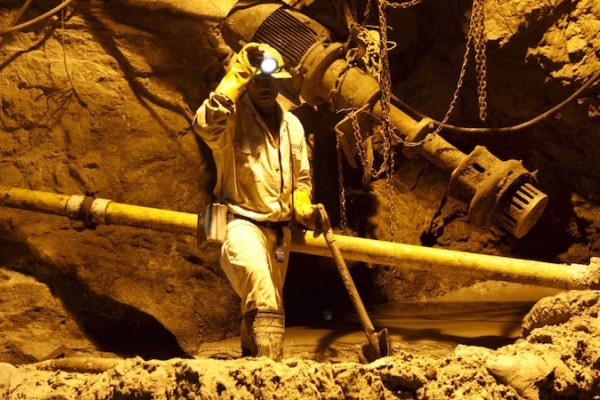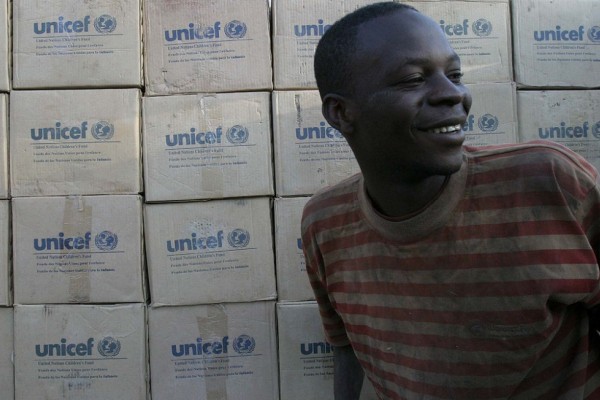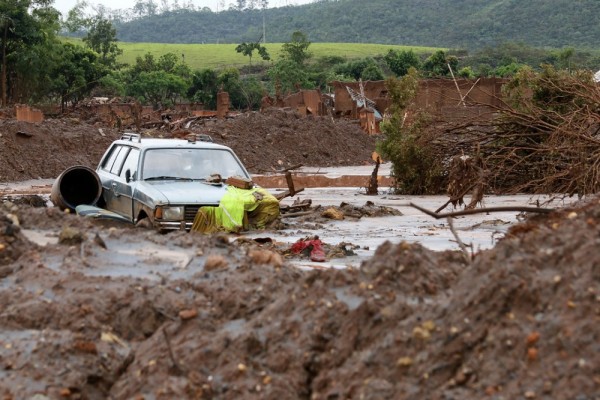First Nations in northern Ontario and Mexico struggle against gold mining giants
How Canadian mining firms legitimize extraction through neoliberal frameworks and a powerful national myth of benevolence
Canadian PoliticsEnvironmentIndigenous PoliticsCanadian Business

The Lac Des Iles mine, an open-pit and underground operation located almost 100 kilometres north of Thunder Bay, Ontario. Photo courtesy of North American Palladium.
Although Canada hosts the world’s largest transnational mining industry and spends more on mineral exploration than any country in the world, there remain mineral-rich regions within its territory that, for logistical reasons, have yet to be exploited by mining companies. Many of these unexhausted regions are in Ontario, and in recent years, the global mining industry has identified the province as the most lucrative site of investment within Canadian borders.
In the coming years, gold production in Ontario is expected to expand significantly as three new mines (Greenstone, Magino, and Côté) enter their productive phases. The companies behind these operations (Equinox Gold, Argonaut Gold, and Iamgold respectively), and their role in the processes of unequal North-South exchange that comprise global neo-colonialism, provide useful insight into the dispossessive nature of Canadian mining investment domestically and abroad, and the Canadian state’s role in supporting accumulation within and beyond the country’s borders.
Ontario mining and the lie of reconciliation
In the latest issue of the Canadian Mining Journal, Chris Hodgson (formerly Ontario’s former minister of natural resources and currently the president of the Ontario Mining Association, an industry lobbying group) outlined the centrality of mineral extraction to provincial, national, and international investment in Ontario. “Mining operations in Ontario contributed to an estimated annual total of $7.5 billion to Ontario’s GDP,” he writes, “[and] the market value of minerals produced by the major mines… was over $10.7 billion in 2020, which accounted for 24% of Canada’s total.” There are currently 41 active mining operations in Ontario, but Hodgson predicts a continued expansion of the industry no matter which political party holds the premiership. He predicts the value of minerals produced in Ontario will rise to $13.7 billion by 2025.
In 2020, over 40 percent of the gold produced in Canada was mined from Ontario operations, and Premier Doug Ford has sought to make the province even more open to mining capital. His government is still pushing to develop the controversial “Ring of Fire” mineral crescent in the province’s north, a project that may severely damage the area’s abundant peatlands, which are necessary for the absorption of carbon dioxide as the effects of climate change continue to intensify. Ford himself has attended the openings of mines and poured commendations upon the industry. At the opening of Harte Gold’s Sugar Zone mine, he stated that the mine’s inauguration “is a signal to the world that Ontario is Open for Business. It shows that this government is committed to improving the conditions for businesses, so they can thrive. It’s also one more example of why Ontario is a global leader in mineral exploration and production.”
On March 17, 2022, Ford visited the Lac-des-Iles mine and announced the province’s first-ever “Critical Minerals Strategy,” which is aimed at developing mineral deposits in the province’s north, including in the Ring of Fire region. For their part, First Nations chiefs whose communities will be impacted by Ring of Fire developments have accused the Ontario government of acting duplicitously, seeking to circumvent Indigenous-led environmental assessment measures, and showing little concern for the fact that the destruction of the region’s “carbon sink” peatlands will exacerbate the global climate crisis.
On January 19, 2022, the chiefs from Attawapiskat, Eabametoong, Fort Albany, Kashechewan and Neskantaga sent a joint letter to federal Environment Minister Steven Guilbeault in which they referred to the peatlands as “the world’s lungs” and asserted that “rampant mining development could not only destroy this globally critical carbon sink, but release its huge store of carbon and escalate climate change further into catastrophe.” Attawapiskat Chief David Nakogee later said that the chiefs “didn’t get much of a response” from the minister.
The Ontario government is not only facing Indigenous pushback in the Ring of Fire region. Members of the Asubpeeschoseewagong (or Grassy Narrows) First Nations community in eastern Ontario have accused the provincial government of breaking the law by granting mining permits for their territory without consulting them. This consultation is required under the Canadian Constitution and the Ontario Mining Act.
Grassy Narrows Chief Randy Frobisher has pointed out that his community is already suffering from mercury poisoning related to mining projects going back to the mid-1900s, and that the new permits will allow increased industrial harm in the form of, among other things, “mechanized surface stripping which involves the use of heavy equipment to remove all vegetation and soil from areas of rock.”
“When the government issues mining permits behind our backs,” said Frobisher, “that’s not reconciliation. That’s destruction.”
The promise of “reconciliation” that Canadian governments peddle as a smokescreen for their exploitative activities is one important way that Canada brands itself as a uniquely sincere and constructive actor domestically and abroad. The actions of the mining industry in Ontario reveal what any honest observer already knows: Canada will always toss aside its “reconciliation” project the second it becomes an obstacle to private capital interests.
Likewise, the actions of the Canada-based mining industry abroad undermine the positive, progressive brand that the Canadian state has carefully tailored for global investors. Taken together, the industry’s actions give the lie to both official declarations of reconciliation and state assertions of Canada’s respect for a universally beneficial “international rules-based order.”
Equinox Gold and Canadian state interests in Brazil
The new Greenstone project near Geraldton, Ontario (about 275 kilometres northeast of Thunder Bay) is 60 percent owned by the Vancouver-based Equinox Gold company. After its completion, Greenstone will be one of the largest gold mines in Canada. It is expected to produce 400,000 ounces of gold in its first five years of operation.
Greenstone was initially a 50/50 venture between Premier Gold Mines and Centerra Gold, a company that has fought tooth-and-nail against the impoverished state of Kyrgyzstan after it nationalized the Centerra-owned Kumtor gold mine in May 2021. In December 2020, Equinox Gold acquired Premier, and shortly thereafter Centerra sold its half of the operation to Orion Mine Finance for US$210 million. Orion then sold 10 percent of its half to Equinox, granting Equinox a majority share in the project.
Equinox Gold has a notoriously poor human rights record in several Latin American countries. In March 2021, a dam at a Brazilian gold mine owned by Equinox collapsed, contaminating the water supply for a nearby community of 4,000 people in the Aurizona district. Although the company claimed that it quickly began distributing clean water to the affected families, the community members refuted this assertion. They reported that the water supplied by Equinox “present[ed] traces of mud and a strong odour,” and that contact with the water caused rashes in children and adults. In response, Equinox called reports of its failure to deliver clean water to residents “total lies.”
Locals began staging protests in opposition to the company’s actions. Multiple protestors were arrested, and some reported that they received threats after being released. Jonias Pinheiro, a resident of Aurizona who worked for Equinox for several years, reported that the company’s presence in the region was detrimental to the social and economic fabric of the community. “The company controls the municipality,” he stated, adding that:
There have been cases of criminalization and even assassination of social leaders. The company acts as if all Aurizona district is its private property, preventing local residents from catching crabs and collecting fruits the traditional source of livelihood for families in the region. Residents that are caught practicing these activities are taken by private security guards to the police. One thing is very clear: these kinds of megaprojects are always accompanied by violence against women, prostitution and illicit activities. It is very important to spread the word about what is happening here throughout the world, including in Canada, [where] the company is headquartered.
On June 25, 2021, a Brazilian court determined that Equinox Gold should supply clean drinking water for the residents of Aurizona. However, community members continue to report that their appeals have not been met. On March 15, 2022, roughly one year after the dam’s collapse, Aurizona residents and members of the Movement of People Affected by Dams (MAB) and several other social organizations occupied the office of the secretary of state for the environment and demanded clean drinking water for their families. The residents of the district still report that their water, soil, and air is contaminated and that some of their homes have been damaged by dynamite explosions at the Equinox-owned mine.
While viewing Equinox Gold’s actions in Aurizona as a microcosm of Canadian mining investment in the Global South can be instructive in a number of ways, it is also important to emphasize the ways in which the Canadian state functions on a geopolitical level to ensure that companies like Equinox are able to reap massive profits from underdeveloped countries while leaving little for the locals. From this perspective, it must be noted that Brazil is one of Canada’s largest trading partners in the hemisphere, and Canadian companies own significant extractive operations in the country. This is possibly the reason that Canadian intelligence agencies have taken an active role in monitoring the activities of Brazil’s Ministry of Mines and Energy.
In 2013, Edward Snowden’s document leaks revealed that the Communications Security Establishment Canada (CSEC) tracked emails and phone calls within Brazil’s mines and energy ministry. This intelligence was then shared with the United States, Britain, Australia, and New Zealand as part of the “Five Eyes” alliance, indicating that the Canadian state is concerned about losing its favourable position in the long-exploited countries of South America to ascendant Chinese companies. Then-President of Brazil Dilma Rousseff responded to the revelations of Canadian spying by saying that these actions are “unacceptable among countries that claim to be partners” and demanded an explanation from Canadian officials.
Brazilian Mining and Energy Minister Edilson Lobao indicated the possibility that the spying was motivated by Canadian mining investments, but in diplomatic fashion, he refused to present definitive accusations: “There are many Canadian businesses interested in doing business in our country. If that is where the interest in spying comes from, to help certain business interests, I cannot say.”
When one considers the lack of clean water in some communities impacted by Canadian mining, or the fact that Canada deployed its surveillance agencies against a country in which it felt that its extractive investments were threatened, the domestic parallels are obvious. It is difficult to avoid connecting these events to Indigenous communities within Canada that lack clean water due to industrial pollution, or to revelations that CSIS has collected intelligence on peaceful climate activists and Indigenous-led protest movements for years.
Equinox and Argonaut in Mexico
Equinox Gold’s investments in Mexico have also been the site of considerable social conflict. One of these sites is the ejido of Carrizalillo, which is about half a kilometre from the leach pad at the company’s Los Filos mines. After the mine became operational, the ejido reported that their water sources were polluted and there had been a “marked increase” in health problems that they believed to be caused by “constant exposure to arsenic and heavy metal-laden dust from the mine.” These health problems include “prevalence of eye irritation, skin conditions, respiratory trouble, premature births, and birth deformations.” When the community told the company to redress these harms, which they claim are a breach of the social-cooperative agreement signed between the community and the former mine operators, they were met with “racist and discriminatory” treatment.
In a letter to the mine’s manager, the community reported that efforts to negotiate with the company “always end with incomplete responses or without resolution and with arrogant acts and insults that extend to acts of discrimination and lack of respect.” They stated that on one occasion the manager responded to their concerns by demanding that they “stop threatening him,” and if they were unhappy with his actions, they could “go ahead and shut down the mine.” In response, community members blockaded the mine for 83 days. By July 26, 2021, Equinox Gold reported that “the union blockade has been removed [and] access to the mine has been restored.”
Canadian banks have been complicit in Equinox’s actions at Los Filos. In March 2020, BMO, CIBC, Scotiabank, and the National Bank of Canada agreed to fund the company through a $500 million credit agreement. The events at Los Filos evidently do not bother these banks, and it is clear that the Canadian state is untroubled as well, if only from its blaring silence. As MiningWatch Canada outlines:
Equinox Gold refuses to engage in a respectful dialogue, considering and incorporating the experiences and problems suffered by the population… This comes alongside the Canadian government’s failure, through its Embassy, to not ensure that Canadian companies and investors comply with the laws of a foreign country and respect the human rights of the population.
Like Brazil, Mexico offers significant benefits to Canada-based extractive companies. Mexican mining regulations are by far the least stringent in North America. Mexico “prohibits and registers much [fewer] toxic substances than its northern neighbors.” For example, in 2018, Mexico recognized only 104 pollutants, while Canada recognized 346. As a result of this leniency, Mexico reports far fewer toxic substance incidents and therefore holds far fewer companies liable for their use and abuse. In 2013, Mexico’s mining guild “reported only eight toxic substances used and released into the environment to the Mexican authorities,” while that same year in Canada there were 63 reports.
Mexico’s lax mining regulations are related to its membership in the North American Free Trade Agreement (now called the US-Mexico-Canada Agreement, or USMCA), of which Canada was a leading proponent. NAFTA had far-reaching effects on many industries within Mexico and on the Canadian companies invested in the country. Indeed, the statistics are unmistakable: following the passing of NAFTA in 1994, the number of Canadian-owned mines in Mexico skyrocketed from 52 to 244. As the Government of Canada website explains: “Mexico’s abundance of natural resources, particularly in the mining sector, has generated interest from Canadian companies for many years.” Currently, 125 of the 179 foreign companies that operate in the Mexican mining sector are based in Canada or contain Canadian capital: roughly 70 percent of all foreign mining activity in Mexico.
In July 2019, more than 1,500 demonstrators marched to defend their territory against Argonaut Gold in Dolores Hidalgo, Guanajuato, Mexico. Photo courtesy MiningWatch Canada.
The cyanide leaching method poses a hazard to a huge subterranean aquifer in the region known as the “Cuenca de la Independencia.” This aquifer is utilized by seven nearby communities, and the pollution of the water source would lead to immense difficulties for their residents. Thousands of community members have led marches against the “toxic mining” practices of the Canadian company, and bemoaned the fact that Argonaut has attempted to buy goodwill from Antón de las Minas by offering scholarships to select residents, “taking advantage of the inability of the State to guarantee the right to education.” Additionally, official complaints by communities surrounding other Argonaut projects in Mexico—namely the “La Colorada” mine, where community members have endured “[negative] effects to their health, structural integrity of their houses, and working conditions of their employees”—have been a source of concern for residents near the Cerro del Gallo project.
Although Argonaut Gold has been active in marketing itself to locals as a benevolent embodiment of “corporate social responsibility,” mineral extraction has not yet started; Cerro del Gallo is still in the “advanced exploration” stage. Even in the context of Mexico’s notoriously permissive mining regulations, the company has not been able to secure the necessary permits to begin exploitation. They have applied to Mexico’s Secretariat of Environment and Natural Resources (SEMARNAT) four times, and in every instance Argonaut’s Cerro del Gallo project has been rejected.
The most recent denial occurred on December 2, 2021, when Mexico’s General Directorate of Environmental Impact and Risk (DGIRA) published a report stating that:
[T]he minimum information necessary to determine the environmental viability of the [Cerro del Gallo] project was not submitted… Furthermore, there is no certainty about the recent, cumulative and synergistic impacts of the project’s execution, in addition to the ability to prevent, mitigate and/or compensate for these impacts.
In short, SEMARNAT found that Argonaut’s plans “were not compatible with the region’s ecological programs.” Nevertheless, Argonaut has continued to search for possible ways to move forward with the project. If successful, it will be able to add another profitable operation to a portfolio that is bloated by Global South investments and the forthcoming Magino mine outside Wawa, Ontario.
Iamgold in Ontario and Burkina Faso
In July 2020, Iamgold began construction of the Côté gold mine near Gogoma, Ontario, of which it owns 70 percent. That September, Premier Doug Ford and Prime Minister Justin Trudeau attended the opening of the mine, which Ford celebrated by praising the province’s “world-class mining industry.” But while the Côté gold mine may be a massive undertaking for the company, Iamgold’s historical focus has not been Ontario or even Canada. Many of its most productive mines are located in the underdeveloped nations of West Africa. Iamgold’s first major extractive investment was the Sadiola gold mine in Mali, a joint venture with the South African company AngloGold Ashanti. From there, the company purchased many additional operations in Mali, Ghana, Senegal, Burkina Faso, and more.
A great day for Ontario as we celebrate the opening of the Côté Gold Mine in Gogama, creating permanent 450 jobs and 1000 more during construction.
— Doug Ford (@fordnation) September 11, 2020
Our world-class mining industry supports over 76,000 jobs and is the largest employer of Indigenous peoples in Ontario. pic.twitter.com/12L7jynFf1
In Burkina Faso, Iamgold owns 90 percent of the very productive Essakane gold mine. Overall, Canadian mining companies own over half of all operational mining projects in the gold-rich country. These companies include Iamgold, Orezone Resources, High River Gold, Barrick Gold, Tajiri, Roxgold, and Semafo. Despite possessing a glut of lucrative mineral resources, foreign investment and political instability means that little of the profit remains in Burkina Faso, and that the country is kept submerged in a state of poverty and underdevelopment. Statistics from 2017 show that over 90 percent of the profits from gold mining in Burkina Faso (roughly $2.5 billion of $2.8 billion) were removed from the country by smugglers and foreign-owned companies, including Iamgold, which have taken advantage of the neoliberal paradigm imposed on the country in the aftermath of the Western-backed 1987 coup against leftist leader Thomas Sankara.
The privatization of mineral resources in Africa has been a goal of the Canadian state for several decades. In addition to offering diplomatic support to coups against “resource nationalist” leaders such as Kwame Nkrumah and Patrice Lumumba, Canada’s foreign aid programs frequently tie humanitarian assistance to market privatization. For example, in 2003, the Jean Chrétien government instituted the Canadian Investment Fund for Africa (CIFA), to which it allocated $100 million. In the Government of Canada’s own words, the goals of CIFA were: “privatization [of] business and other services (20.00%),” “industrial development (30.00%),” and “mineral prospection and exploration (30.00%).”
Additionally, programs like Canada’s $20 million West Africa Governance & Economic Sustainability in Extractive Areas (WAGES) program go hand-in-hand with these privatization initiatives. Essentially, WAGES is a jobs training program targeting West Africans—specifically people in Burkina Faso, Ghana, and Guinea—in communities surrounding mining operations. When paired with privatization initiatives like CIFA, one can see that a significant portion of Canadian development aid to West Africa is allocated to ensure, firstly, that foreign companies have access to the region’s mineral resources, and secondly, that there is a low-wage African workforce available to these international (and largely Canadian) investors.
The three new gold mines in Ontario—Greenstone, Magino, and Côté—are owned by Canada-based mining companies whose international operations have generated social resistance from Mexico to Brazil to Burkina Faso. Nonetheless, the Ontario and federal governments have lavished praise on them, and Doug Ford has made the increased availability of northern minerals for companies like Equinox, Argonaut, and Iamgold a pillar of his post-COVID economic agenda. At the same time, he and other Canadian politicians are willing to cynically adopt the language of “reconciliation” and “human rights” to disguise these colonialist and imperialist programs.
Although these mines and the policies that produced them—Greenstone and Aurizona, Magino and Cerro del Gallo, Côté and Essakane—may seem distant, they are in fact indivisible facets of the singular Canadian mining industry, which views state-backed accumulation at home and abroad as the key to its growth. The dispossession of peoples in Grassy Narrows and the Ring of Fire is not unrelated to the dispossession of Brazilians, Mexicans, or Burkinabè people caught in the crosshairs of Canadian extractivism; rather, they are all marginalized victims of an acquisitive economic system that Canada has been enforcing upon the people within and outside its own borders since the nation’s founding.
Owen Schalk is a writer based in Winnipeg. His areas of interest include post-colonialism and the human impact of the global neoliberal economy. Visit his website at www.owenschalk.com.










